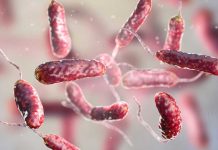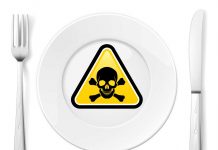Similar to other causes of sickness, some groups of people pose a higher risk of more complicated or severe illness when they eat contaminated food. These people are categorized into groups and are considered Highly Susceptible Populations (HSPs).



Highly Susceptible Populations (HSPs)
The FDA Food Code identifies a “highly susceptible population” as “persons who are more likely than other people in the general population to experience foodborne disease”. Specifically, these groups include:
- Pregnant women are more likely to get a foodborne illness because pregnancy alters a mother’s immune system. Likewise, harmful bacteria can also cross the placenta and infect an unborn baby whose immune system is under-developed. Of specific concern are the pathogens Listeria monocytogenes (Listeria) and Toxoplasma gondii. A pregnant women are 10 times more likely to get a Listeria infection and becoming infected during pregnancy is serious and can lead to miscarriage, premature delivery, stillbirth, sickness or the death of a newborn baby.
- Infants and children younger than age 5 have immune systems that are still developing, so their body’s ability to fight germs and sickness isn’t as strong. Food illness can be particularly dangerous for young children because the illness can lead to diarrhea and dehydration. For example, children younger than 5 are three times more likely to be hospitalized if they get a Salmonella infection. Kidney failure also strikes 1 out of 7 children under age 5 who are diagnosed with E. coli O157 infection.
- People older than age 50 have a higher risk for foodborne illness. This is because as people age their immune systems and organs don’t recognize and get rid of harmful germs as well as they once did. Nearly half of people aged 65 and older who have a lab-confirmed foodborne illness from Salmonella, Campylobacter, Listeria or E. coli are hospitalized. Food establishments in health care, assisted living, adult day care, nursing homes, and senior citizen centers are required to take additional precautions to prevent foodborne illnesses.
- People with weakened immune systems from medical conditions, such as diabetes, liver disease, kidney disease, organ transplants, or HIV/AIDS; or people receiving chemotherapy or radiation treatment and taking medications for medical conditions – cannot fight off germs and sickness as effectively. For example, people on dialysis are 50 times more likely to get a Listeria infection.
If you or someone you care for is in one of these groups, it’s especially important to take steps to prevent food illness and to know which foods are more associated with illness than others.
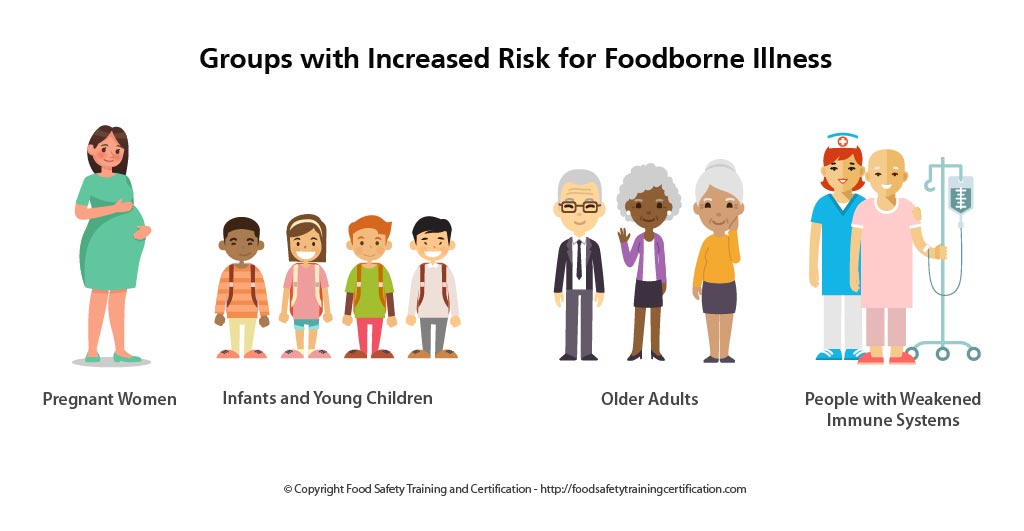


Foodborne Illness
The CDC estimates that each year 48 million people get sick from a foodborne illness, 128,000 are hospitalized, and 3,000 die.
Foodborne illness (also referred to as food illness, food poisoning, and foodborne disease) is mostly caused by pathogens – bacteria, viruses, or parasites (also referred to as biological hazards).
- Learn about proper hygiene, cross contamination, cold and hot food safety, foodborne pathogens, and best practices to prevent foodborne illness.
- Food Manager Training & ANSI Certification - $99.00
- Food Handler Training - only $7.00!
- HACCP Training: 16hr/4hr/1hr
- Food Allergy Training - $15.00
- Enter Promo "train10off" at Checkout
Temperature “Danger Zone”
Leaving food out too long at room temperature can cause bacteria to grow to dangerous levels that can cause illness. Bacteria grow most rapidly in the range of temperatures between 40°F and 140°F, doubling in number in as little as 20 minutes. This range of temperatures is called the “Danger Zone”.
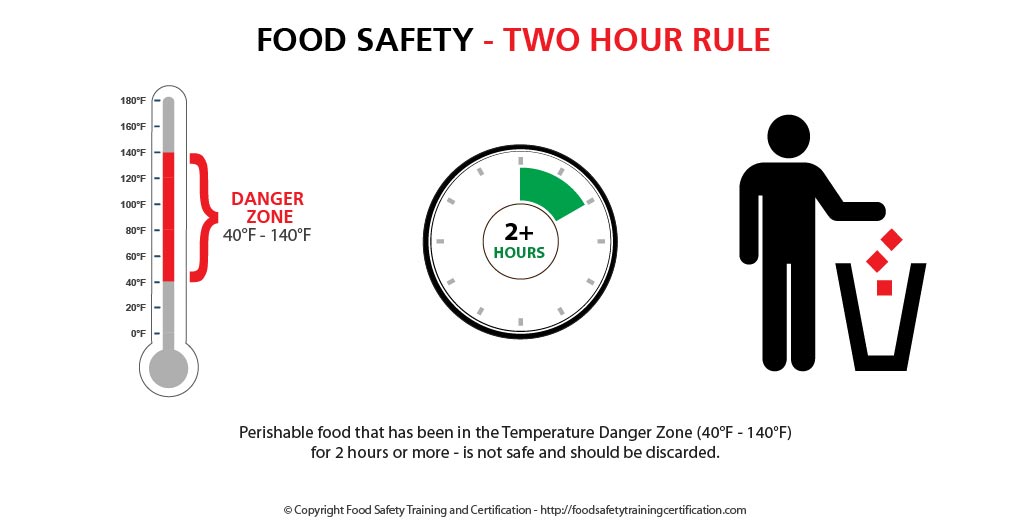


High Risk/Low Risk Foods for Bacterial Growth
High-risk foods are those that have ideal conditions for bacterial growth. This means they’re usually:
- Neutral in acidity
- High in starch or protein
- Moist
Examples: Foods such as raw meat or seafood, cooked rice or pasta, eggs, and dairy are all considered high-risk because they provide the perfect environment for bacteria to grow. This is why it’s essential to practice proper food handling when dealing with these foods.
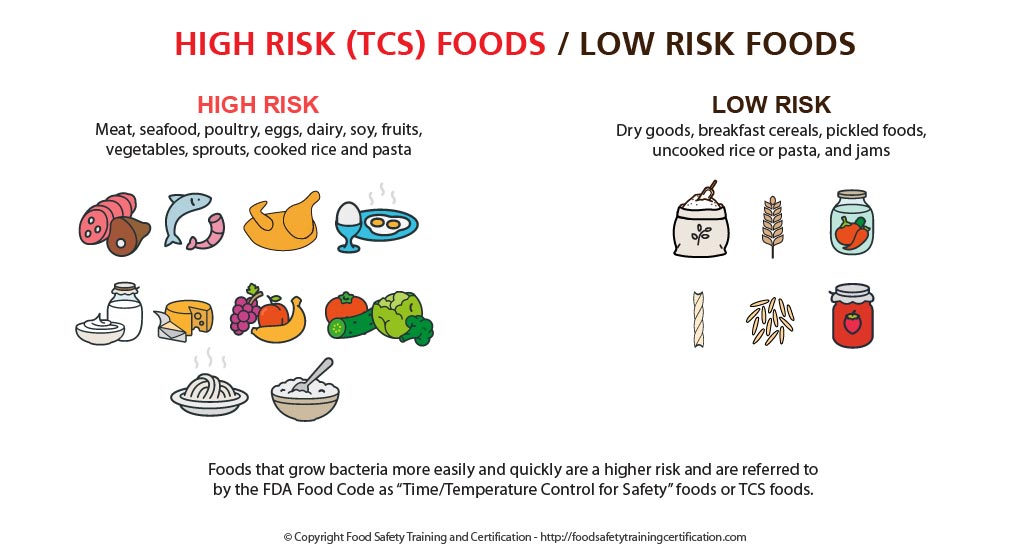


Low-risk foods are those that don’t have particularly good bacterial growth conditions. These foods are:
- High in acidity
- High in salt or sugar
- Dried
- Canned or vacuum packed
Examples: Low-risk foods like dry goods, breakfast cereals, pickled foods, uncooked rice or pasta, and jams. Although these foods are not common sources of biological contamination, the appropriate care must still be taken when handling them.
Vulnerable groups should take extra precautions and avoid the following foods:
- Raw or rare meat and poultry;
- Raw or undercooked fish or shellfish;
- Raw or undercooked eggs or foods containing them ( cookie dough and homemade ice cream);
- Fresh sprouts;
- Unpasteurized ciders or juices;
- Unpasteurized milk and milk products;
- Uncooked hot dogs.
Symptoms of Foodborne Illness
- Common symptoms of foodborne illness are diarrhea and/or vomiting, typically lasting 1 to 7 days. Other symptoms might include abdominal cramps, nausea, fever, joint/back aches, and fatigue.
- What some people call the “stomach flu” may actually be a foodborne illness caused by a pathogen (i.e., virus, bacteria, or parasite) in contaminated food or drink.
- The incubation period (the time between exposure to the pathogen and onset of symptoms) can range from several hours to 1 week.
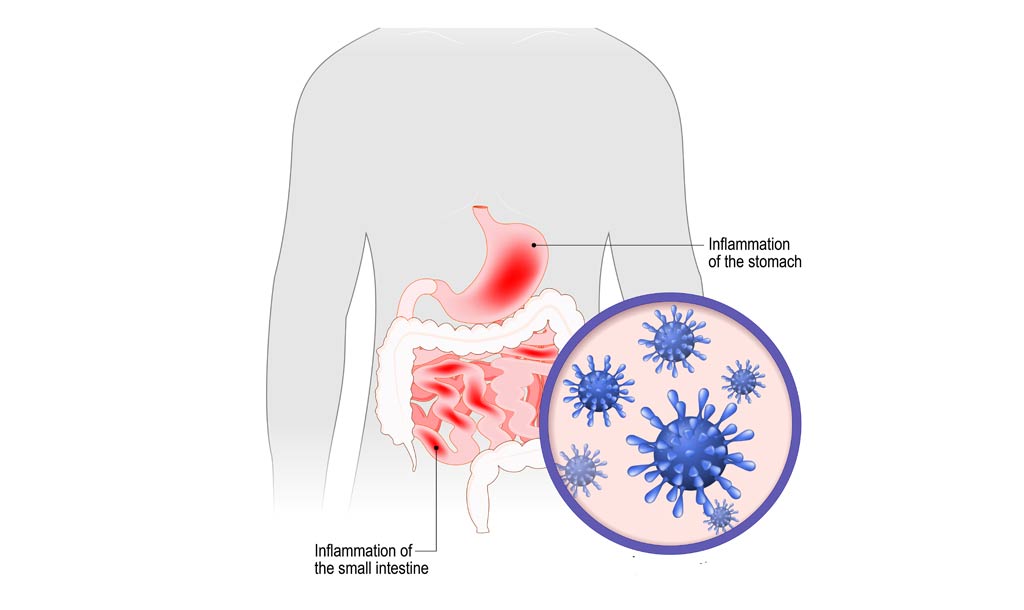


Summary
It is very important to understand why and how foods can make you sick when you are more vulnerable to foodborne illness.
Take extra care during the holidays to ensure that people more susceptible to a foodborne illness (e.g., pregnant women, young children, older adults, and people with weakened immune systems) do not get sick.
Avoid high-risk foods, such as raw or undercooked eggs, unpasteurized dairy products, raw fish or shellfish, and undercooked meat and poultry.
Additional Resources
- U.S. Food and Drug Administration. Food Safety: Importance for At-Risk Groups. Retrieved October 11, 2019, from
https://www.fda.gov/food/people-risk-foodborne-illness/food-safety-importance-risk-groups - 2017 FDA Food Code. Chapter 1-2 Definitions. 1-201.10 Statement of Application and Listing of Terms (PDF). Retrieved November 13, 2019, from
https://www.fda.gov/media/110822/download - HealthyPeople.gov. Food Safety. Retrieved December 13, 2019, from
https://www.healthypeople.gov/2020/topics-objectives/topic/food-safety




